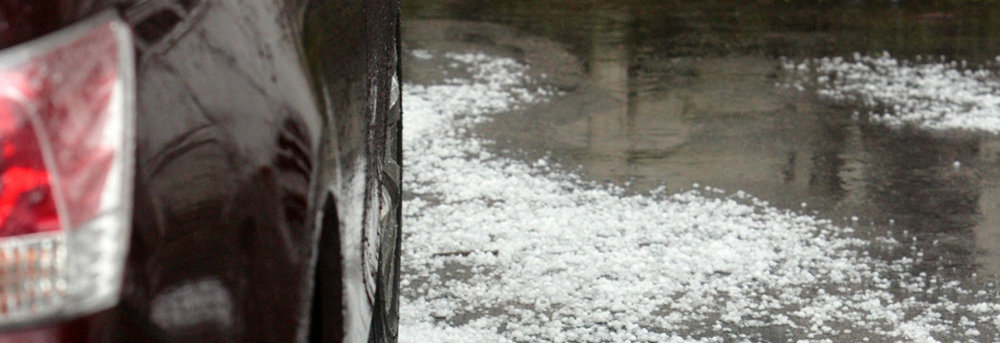Houston sits under a storm-prone sky where severe hailstorms frequently unleash damaging chunks of ice on homes and businesses. In recent years Texas has led the nation in hail activity. For example, NOAA reported 878 major hail events in Texas in 2024 – far more than any other state. A 2023 analysis found that over 10 million U.S. homes were hit by 1-inch hail, including about 2 million homes in Texas alone. Locally, Houston’s National Weather Service station has recorded 108 hailstorms with stones ≥2 inches since 1992, including 33 especially severe storms. Springtime (March–May) is the peak season for large hail in Southeast Texas. These statistics make it clear why Houston homeowners and businesses must understand how hail can damage property and how to navigate insurance claims.
How Hailstorms Impact Houston Properties (Residential & Commercial)
Hailstorms strike with little warning, and damage is often widespread. Roofs: The brunt of hail damage typically hits roofs. Asphalt-shingle roofs show circular “bruises” or areas of granule loss from hail impact. Even hailstones only an inch in diameter can knock off protective granules, exposing the shingle’s asphalt layer and shortening its lifespan. Older or weaker roofs are even more vulnerable; the severity of hail damage depends on roof age, material and slope. Large hail (golf-ball sized or bigger) can crack or puncture shingles and tiles, leading to leaks. Flat commercial roofs can tear, dent or have embedded stones that perforate the membrane. In all cases, a compromised roof can allow rainwater to flood ceilings, walls, insulation and personal property.
Other Structures: Hail can dent metal panels, crush siding, and tear off gutters. Windows and skylights may shatter or crack. Glass doors and sunroofs often break under direct hits. Outdoor equipment is at risk too – air conditioners, solar panels, and fence panels frequently get dented or broken. Even vehicles parked outside can be peppered with dings. Industry experts note that large hail can “damage cars, break roof tiles, punch through roof shingles, [and] break window frames”. If flying hail breaches a window or roof, rain may soak carpets, drapes, furniture and heirlooms, necessitating costly interior repairs.
Commercial Properties: Large commercial buildings face special risks. A wide flat roof is like a target for hail: sustained impacts can deform rooftop HVAC units, pond water, or tear the roof membrane. Hail-heavy warehouses or office buildings may need full roof replacement to prevent collapse or leaks. Broken glass in storefronts or offices can shut down businesses until fixed. In Houston’s growing commercial districts, “commercial hail damage” is a serious concern that can halt operations and require urgent insurance repair.
Local Weather Factors: Houston’s proximity to the Gulf means storms often carry high winds and rain along with hail. A single severe thunderstorm may produce golf-ball-sized hail in one neighborhood and ruin a roof in another. In 2023 alone, an unusually active season saw dozens of days with very large hail. Overall, even “pea-sized” hail can bruise softer surfaces, so property owners should inspect all buildings carefully after any storm.
In short, hailstorms can inflict widespread, multi-faceted damage on Houston properties. Roofs usually take the worst beating, but gutters, windows, cars, and interior finishes can all suffer. It’s vital to assess and document every damaged component right after a storm. (For example, note every cracked shingle or dent; take photos immediately.) Detailed evidence will be critical if you need to file a Houston hail damage insurance claim for repairs or replacement.
Common Challenges in Hail Damage Claims & How Attorneys Help
Once damage is assessed, policyholders must navigate the claims process. This is often where disputes arise. Documentation and Timing: Insurers expect thorough proof of loss. Texas law requires you to report damage “immediately” or within a reasonable time. Filing late can lead to denial. You also have a duty to prove your loss with clear evidence – detailed descriptions, repair estimates, and especially time-stamped photos or videos. Failing to document every damaged item (shingles, vents, equipment, etc.) can give an insurer an excuse to underpay. Tip: Keep a written list of all damaged items and their conditions, and take multiple photos before any repairs.
Coverage Limits and Deductibles: Many policies carry high deductibles (often 2–5% of home value in coastal areas). If your repair estimate doesn’t exceed that deductible, the insurer will pay nothing. It’s important to know your coverage: standard Texas homeowners insurance usually covers hail as a named peril, but some coastal windstorm policies may exclude it. Commercial property policies often cover hail under “All Risk” or named peril sections. However, exclusions or limitations may apply (for example, wear-and-tear vs. storm damage).
Insurer Tactics: Adjusters may use statistical models or downward depreciation to minimize payouts. They might attribute damage to aging (“wear and tear”) instead of the recent storm, or claim a different cause. We often see underpaid claims where the insurer insists that a damaged roof was already old, even if the homeowner can prove recent hail impacts. Homeowners may also be overwhelmed by repair estimates and accept a lowball offer.
Legal and Procedural Hurdles: Texas law imposes strict deadlines on insurers. Within 15 days of notice they must acknowledge your claim and request any documentation. After receiving all required proof of loss, they have about 15 business days to accept or reject. If they delay past 60 days without paying a valid claim, they can owe penalty interest. Keeping track of these deadlines is tricky for most policyholders.
How Attorneys Help: A skilled property damage attorney knows these pitfalls and can intervene at each step:
- Policy Review: We analyze your insurance policy to confirm whether hail (and related wind/rain) are covered. If your policy is unclear or has exclusions, we clarify your rights. Sometimes an insurance agent overlooked adding necessary coverage – we look for those gaps early.
- Evidence Gathering: We advise on collecting proof. This can mean hiring a professional roof inspector or forensic weather analyst to document hail size and frequency. Attorneys can recommend public adjusters or engineers to fully scope the damage. We ensure that all damaged property – even items inside the home or far end of a commercial roof – are documented in claims.
- Filing and Deadlines: We make sure your claim is filed properly and on time. If the insurer demands information, we provide it quickly. Attorneys track insurer deadlines (15, 60-day rules) and can notify the company and Texas Department of Insurance (TDI) if they miss them.
- Negotiation: Having an attorney’s letter often changes how adjusters respond. We negotiate with carriers and their engineers or adjusters, pushing back against unreasonable depreciation or denials. Insurers pay more attention when we are involved; they know we’re prepared to enforce your rights.
- Dispute Resolution: If a claim is denied or stalled, attorneys can pursue appeals. We might demand an appraisal (if your policy allows) or initiate a lawsuit under Texas law. Texas Insurance Code Chapter 541 requires insurers to treat policyholders in good faith. If an insurer has “unreasonably denied” a valid hail claim, we can hold them accountable. Often that involves filing a formal complaint with TDI or filing suit. In fact, attorneys can help you lodge an insurance complaint with the Texas Department of Insurance. The TDI will forward your complaint to the insurer and push for an explanation or corrective action. If needed, our firm will draft and submit that complaint on your behalf. Throughout, we use Texas statutes to build a strong case if negotiation fails.
By handling these challenges, attorneys level the playing field. Insurers know that a Texas hail damage attorney will insist on every repair dollar owed, and that such attorneys understand both the weather science and the law. In practice, hiring a lawyer for a contested claim often results in a significantly higher settlement.
JCE Law Group’s Commitment to Guiding You Through the Claims Process
At JCE Law Group, we understand how stressful it is to see a storm-damaged home or business. Our attorneys devote personal attention to every client’s hail damage case. We speak plainly, answering your questions as they come up and keeping you informed at each step. Whether you’re a homeowner or a business owner in Houston, our team handles the heavy lifting: we coordinate inspections, compile damage inventories, and manage all communication with the insurance company.
Our commitment means we stand by you from start to finish. We help you file the initial Houston hail damage insurance claim and follow through until your property is repaired. If disagreements arise, we personally engage with adjusters and even contact the Texas Department of Insurance on your behalf. We have successfully represented many Houston clients in hail cases, from small residential roof claims to complex commercial hail damage Houston disputes. In one case, we proved that seemingly minor roof bruising hidden under wet shingles was actually storm damage, securing full replacement for a homeowner who was initially told “no problem.”
Clients appreciate our hands-on approach. You can rely on us to document every damage item, meet all legal deadlines, and explain your policy rights clearly. If filing suit becomes necessary, we leverage the Texas insurance code and case law to pursue damages, including any extra-contractual (bad faith) remedies. Importantly, our firm works on a contingency-fee basis: we only get paid if you receive a recovery. This means our interests are aligned with yours – securing a fair and full insurance settlement.
Throughout our process, JCE Law Group strives to earn your trust. We’re not just storm hail damage attorneys in Texas; we’re your advocates and guides. When you call our Houston office, you’ll know your call is answered by someone who cares about your roof, your family, and your recovery. We have built our reputation on results and responsiveness. Many clients say we felt like “good hands” the whole way and “couldn’t be happier” with the outcome. If you’re dealing with hail damage in Houston, you can count on JCE to protect your interests with integrity and persistence.
Frequently Asked Questions
Q: What immediate steps should I take after a hailstorm damages my property?
A: After the storm passes, safety first – avoid any broken glass or exposed nails. Once safe, conduct a careful inspection. Make a detailed list of every damaged item or area (roof shingles, siding, windows, etc.) and take clear photographs or video. Cover holes or leaks temporarily (with tarps or boards) to prevent more water damage. Save any hailstones or broken debris for evidence. Then, notify your insurance company as soon as possible to start your hail damage insurance claim in Houston. Texas law expects prompt notice, so don’t delay. Document all communications with the insurer (dates, names, and what was discussed), as this record can be vital if problems arise later.
Q: How long do I have to file a hail damage claim in Texas?
A: You should report the damage immediately and initiate your claim right away. Texas law sets an ultimate limit (statute of limitations) to sue for hail damage, which is generally two years from the date of loss. In practice, however, insurance policies often require you to give notice much sooner (often within days or weeks). For example, Texas insurance regulations require insurers to acknowledge a claim within 15 days of notice. To be safe, contact your insurer immediately after you document the damage. The two-year deadline mainly applies if you end up filing a lawsuit; in most cases you’ll begin the process well before that to ensure coverage and repairs happen promptly.
Q: Does my homeowners or business insurance cover hail damage?
A: Most standard homeowners and commercial property policies do cover hail damage, since it’s a named peril in Texas wind/hail policies. Coverage typically includes repairs for your roof, siding, windows, and even personal property inside if rain leaks in. However, you must pay your deductible first. For example, if your hail-related roof repairs are estimated at $5,000 but your deductible is $7,000, the insurer would pay nothing. Policies often treat homes and businesses similarly for hail – if you have a “building and contents” policy for your business, it will cover hail as well. Always check your policy language: some coastal-area windstorm policies may exclude certain hail, and high-deductible policies mean you shoulder more of the cost. If you’re unsure what’s covered, a qualified attorney or insurance specialist can interpret your policy’s coverage.
Q: What can I do if my hail damage claim is denied or underpaid?
A: First, don’t panic. Review the denial letter carefully. Texas law gives you options. You can file a complaint with the Texas Department of Insurance (TDI) to report unfair practices. The TDI will contact your insurer for explanations and try to mediate a resolution. Often, involving an attorney at this point helps. An experienced attorney (a Houston hail insurance claim lawyer or Texas hail damage attorney) can negotiate with the insurer on your behalf, correcting undervaluations or adding overlooked damage. Attorneys can also demand an appraisal if your policy allows it, or if needed file a lawsuit under Texas’s insurance code. The insurance company then faces legal penalties (up to 18% interest) for delayed payment if they continue to stall. In short, you don’t have to accept a bad settlement – a knowledgeable hail damage attorney will advise the next steps to get full payment.
Q: Should I hire a lawyer for my hail damage insurance claim?
A: While not required, a Houston hail storm insurance lawyer can be invaluable if your claim is complicated or the insurer is uncooperative. If your claim is straightforward and the insurer pays fairly, you may handle it yourself. But if you face issues (denial, lowball offer, unclear coverage), an attorney levels the field. A skilled Houston roof hail damage lawyer will know the claims process and Texas insurance laws, and can protect you from tricky tactics. They can deal directly with adjusters, file necessary legal actions, and explain complex terms so you understand your rights. Many policyholders find that involving a lawyer early on speeds up the process and improves the final outcome – your attorney is paid from the recovery, so there’s no upfront cost. In short, for any serious hail damage claim in Houston, having an attorney on your side usually ensures your claim is handled properly and your home is fully restored.



